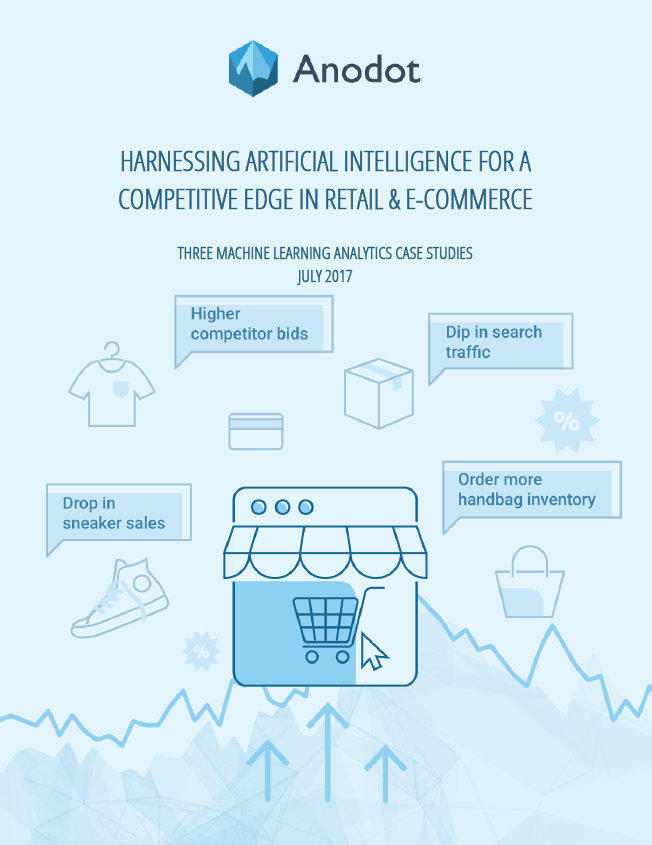Blog Post
5 min read
In the Automation Age: Use AI Analytics to Escape ‘Business KPI Dashboard Hell’
Business KPI dashboards don’t provide actionable insights now
Business data analysts are in dashboard hell right now. They have to interpret data from so many different sources and then try to figure out what is the best action to take, with the most important decisions being made based on this information. Despite having “Key Performance Indicators (KPI) Dashboards” for business, they struggle to get an integrated view of all business metrics.
With greater volumes of data being collected, data analysts can’t keep up with the pace. Companies are making tremendous investments in dashboard and reporting technologies, like Business KPI dashboards, to keep better tabs on their operations.
You’ve probably seen business dashboards with multiple KPIs that show sales figures, customer satisfaction score, churn etc. While designed to provide high level visibility of different business metrics, nevertheless data analysts simply can’t keep up with the demand to crunch all the data and then extract answers from their business KPI dashboards.
Business KPI dashboards provide too much information and too little insight
There are many reasons why business KPI dashboards can’t be relied on to provide you with actionable insights in real time. While an analyst can analyze data based on one or two dimensions (for example, device and geo), when an issue happens, they then have to manually add more KPI dimensions, spending a lot of time to find the source of an issue.
Standard business KPI dashboards fall short when it comes to usability, specifically the accessibility of the important signals in the data. Unable to automatically highlight what’s important, dashboards require analysts to process the data manually and iteratively, and still lack the ability to instantly drill down into granular metric-level data. Traditional analytics and BI solutions, like business KPI dashboards, deal with historical data, not this minute, not showing a real-time status. Due to their limitations, business KPI dashboards typically look at only a subset of all the available data. These limitations yield at best delayed and at worst incomplete results.
Business KPI dashboards simply cannot provide intelligent correlation
The usual business KPI dashboards can’t understand a KPI in the context of the many, complicated, direct and indirect relationships between all your metrics. Data complexity, data-type growth, and data volumes threaten to overwhelm the interface, weakening the dashboard’s consumability. Locating information takes profound familiarity of each dashboard metric, adequately see events and an elephant’s memory as you to try to visually correlate the data from across the organization, trying to figure out what to do next.
When a BI team has trouble keeping up, they often get unpleasant surprises, discovering issues and opportunities long after the financial or reputation damage is done. Despite configuring multiple business KPI dashboards, they can still face many data blind spots. With data constantly changing, looking for answers on business KPI dashboards is a struggle, as something else could come in from left field, totally off the radar, affecting the results.
AI analytics identifies trends and provides correlations in real-time
Instead of long investigations and analysis through multiple business KPI dashboards and making manual correlations, business analysts can rely on AI analytics to probe deeper into the data and correlate simultaneous anomalies, revealing critical insights into operations.
A real-time, large-scale automated anomaly detection system using machine learning methods can free data analysts from constant manual monitoring around just a few KPIs. When working with thousands or millions of metrics, you can’t just hire a staff of thousands of analysts to analyze your data for key decisions. Using automated significance ranking of detected anomalies, data analysts can focus in on the most important business incidents.
This level of automation can provide actionable insights in real-time. Insights built upon deep learning, especially in complex, fast moving digital industries like ad tech, add another level of protection to company revenue. Both Microsoft and Google rely on advances in deep learning to increase their revenue from serving ads. Advanced machine-learning analytics allow ad tech companies to identify trends and correlations in real time, like instantly correlating a drop in a customer’s bidding activity to server latency.
An automated AI analytics solution maps out the relationships between all your metrics, even if they number in the millions. Turning on all of the lights in the room, instead of using just a flashlight, allows companies to correlate all relevant data, not just the typical collected information presented in business KPI dashboards. By taking in the full picture, you can make better decisions to impact business success and improve customer satisfaction.
And that’s where AI analytics really shines. Unlike traditional BI tools, by detecting the business incidents that matter and identifying why they happen, AI analytics lets you remedy urgent problems faster and capture opportunities sooner.
Our automated AI analytics solution uses the latest breakthroughs from machine learning and data science to give our customers actionable insights in real time, something they were not able to achieve from their dashboard based business intelligence, bringing valuable business opportunities and insights to the surface.
Read more









